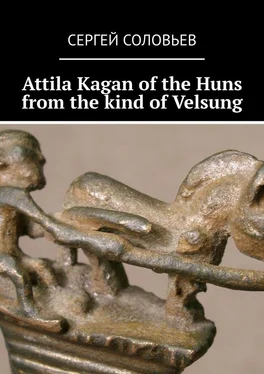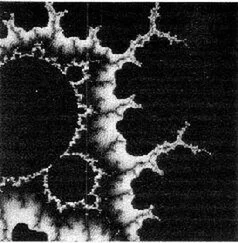This is the custom of neutralizing the dead, known only in the Ciscaucasia and the Volga and Don basin. The dissected burials of the Bronze Age are known in the burial mounds of the pit and catacomb cultures. At the same time, they do not form a single chronological layer, often their dating is complicated by the lack of inventory. Often, the practice of dismembering two buried, buried in one pit. The specific forms of manifestation of the ritual of dismemberment of bones could vary, which can be explained by different motives of dismemberment. But, despite this, common to all options is that such a practice has never been applied to all members of the community and has always been unique. There are two types of dissections, each of which has its own motivation:
Type I – dismemberment caused by necrophobia, rather the desire to render harmless the dead, and to make safe his dead body, which already had no relation to the dead person, that is, the soul. And in later eras, the Indo-Europeans did not sign the graves of the dead, did not put any plates with the names of the dead, even the famous royal burial sites of Macedonia were depersonalized, in contrast to the Athenian burials of the same era. The corpse was dismembered, or mutilated, designed to “render harmless” the deceased. You can recall the belief, already widespread in the historical era, that a vampire can be killed with a stake pierced in his heart or cut off his head, but it can also be killed with silver weapons. Both phenomena have the same motivation. In the Bronze Age, such a dismemberment could probably be subjected to mentally ill or worshipers, priests, sorcerers, fortune tellers. The ritual was intended to deprive the powerful dead man of sacred power. Type 2 – dismemberment of the victim, as atonement for the sins of the organizers of the funeral rite and transfer of the “wrath of the deceased” to the dismembered victim. Either this was used to “alleviate” the suffering of the main deceased or undergo posthumous trials. Type 2 was not used in single burials.
In addition to the Oksko-Sur interfluve, such burials are also known in other territories. But the distribution area of this rite is so great that listing all areas of its existence is very difficult. In addition to the ancient Mordovians, this rite was quite widespread both among Finno-Ugric peoples and beyond. So in the III – IV centuries. the rite of neutralization was known to the Sarmatians (II Akhmerovsky, Salikhovsky burial ground), up to the VII century. it existed among the Turbaslinsky tribes (Dezhnevsky, Turbaslinsky burial grounds), Bakhmutin culture (Birsky burial ground), in the VIII – X centuries. in Saltovo-Mayak culture it is (Mayatsky, Saltovsky, Rubezhansky burial grounds), in the 7th-10th centuries. the rite was present in the graves of Mary (Khotiml burial ground, mounds near Kineshma), in the IX – XI centuries. Vymsk culture, in the XII -XIV centuries. in the monuments of the Makushensky type (Makushensky burial ground), Relkino culture (Relka burial ground), the Udmurts, Rodanovskaya culture, etc. (Matveeva G.I., 2003. S.210—211; Flerov V.S., 1993, 2000a, b; Aksenov V.S., 2002; Finno-Ugric peoples and Balts …, 1987. S.74, 78, 125, 221; Goldina R.D., Kananin V.A., 1989; Shutova N.I., 2001).
All this testifies to the wide distribution of the rite of neutralization of the buried, its evolution in time and the emergence of local features in the population of the Oksko-Sura interfluve..
On the territory of Russia, and it was in the Volga-Don basin, there was a custom of neutralizing sorcerers after death in the 20th century, as it were. In the 1900s, in the Menzelinsky district, at the sorcerer’s funeral, it was customary to put him face down in the grave. In Bogava, the Sviyazhsky district was also laid in this case, the deceased was laid face down, as well as they cut out his heels and stuck aspen against the heart. As everyone understands that, these people did not read at the beginning of the 20th century. “Count Dracula”, and it is natural that these customs have their origin since the Bronze Age.
However, in historiography XVIII – 1st floor. XIX centuries, the Huns were considered Mongols. This point of view was first expressed by Pallas, and then supported by Bergman and Thierry. Joseph de Guinse was the first to express the opinion that the Huns could be of Turkic or Proto-Turk origin. English scientist Peter Heather considers the Huns so-called. “The first group of Turks” invading Europe. The Turkish researcher Kemal Jemal sees confirmation of this version in the facts of the similarity of names and names in the Turkic and Hunnic languages. This version is also accepted by the Hungarian researcher Gyula Nemeth. And it is with this erroneous and unacceptable theory that the following presentation conflicts and refutes the ideas of Joseph de Guin, as if based on nothing. Writes about the history of the Huns Alfan Louis. Great empires of barbarians. From the great migration of peoples to the Turkic conquests of the 11th century. Gumilyov’s significant book on the Huns, the book of M. I. Artamonov, “History of the Khazars”, also made a considerable contribution to the study of this problem.
Adam of Bremen writes in the Slavonic Chronicles, “that the Danes called Russia Ostrogard or Hunigard,” that is, the country of the Huns. The Chronicles say that the River Ens was the border between the Huns and the Bavarians, that is, that the Western Slavs were also considered Huns. The Gustrow ode says that the encouragers wrote from the Ob River, that is, they are also Huns, and the Bronze Age mounds in Germany are called the graves of the Huns. Hansa, the medieval trade and political union of the North German cities, is also called the city of Azerbaijan, Ganza, and this area was in the sphere of influence of the Ephtalite Huns. Mavro Orbini speaks of the island of Philopodius, as he writes in his book “Slavic Kingdom,” the Russians from Biarmia discovered it, and it is inhabited by Slavs, and the island is also called New Earth. As you know, this island is located opposite the Yamal Peninsula. The word “Philopodius” in Greek means “holding Love, the basis of Love”, but Love is the quintessence of the divine essence. In favor of the fact that it is Yamal that is the ancestral home of the Huns and all Indo-European peoples, and says all of the following in this book.
The geography of the region from the Volga and the Don to the Danube and the Ob
The Yamnaya culture, which is generally accepted in modern science, is Indo-European, and in international science it is proved that the Indo-Europeans came to Europe from the Ciscaucasia, and specifically the Volga and Don region, and in the Anglo-Saxon passports of the white Europeans are called “Caucasians”, that is, immigrants from Of the Caucasus. The pits were shepherds, but were not nomads, and the structure of food and social wealth was based on cattle breeding and dairy farming.The measure of wealth, in the “Iliad” and “Odyssey” of Homer, and in the Vedas of India was the presence of bulls and cows in the household. Being a shepherd was an honorable and respected occupation, the god Krishna in India is called the Shepherd, Gopal, and his girls “GOPI”, that is, shepherdesses, accompany him. Homer calls Apollo also herding cows on the slopes of Mount Ida, when Apollo and Poseidon built the walls of Troy to King Laomedont. Cattle breeding in itself lays the need for a large amount of water and grass for animals, and therefore the cattle breeders were and are residents of Finland and Russian Pomerania, as well as the Volga and Ural regions, then eat with plenty of water and grass. That is, these cattle breeders naturally tried to occupy lands with a large amount of water, grass, and spread west and south through the basins of full-flowing rivers. And therefore, the appearance of these tribes on the Danube River in the early days, where they are mentioned in the written sources of Ancient Greece and Rome, is quite natural. The toponymy, the names of the settlements on the Danube speaks of this, these are the cities of Staraya Rasa in Serbia and the city of Savaria in Hungary, now called Sambathei (by the way, Sambatei was so called one of the suburbs of Kiev, and Konstantin Bagryanorodny writes about it). So the shepherds penetrated all the rivers suitable for the milk valley, and captured them.
Читать дальше












